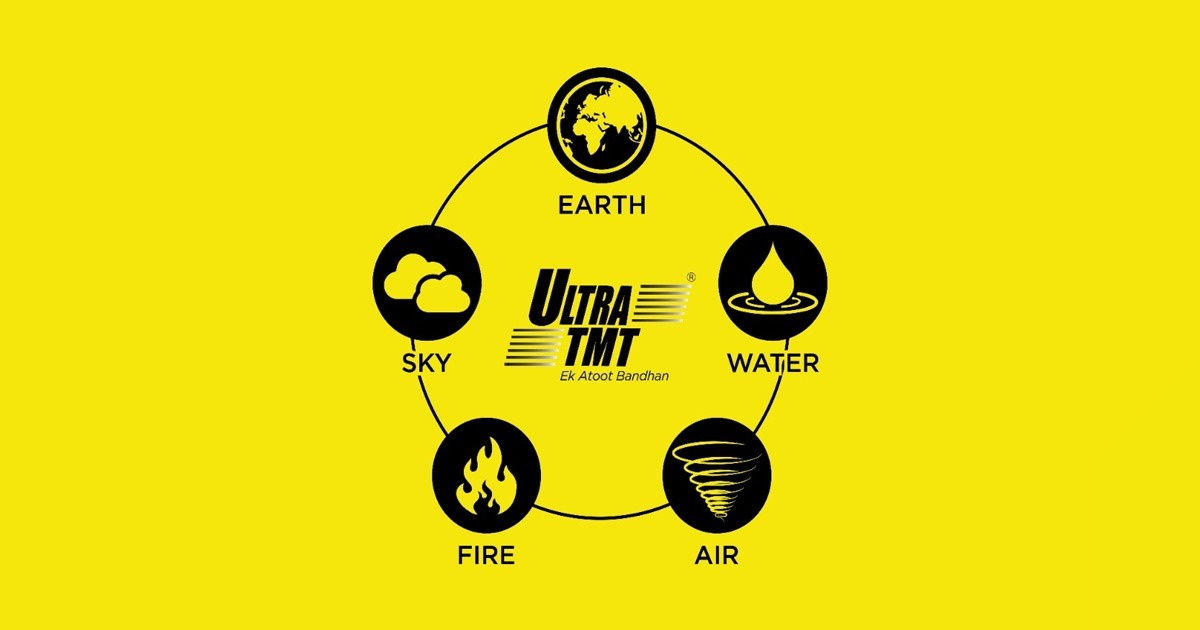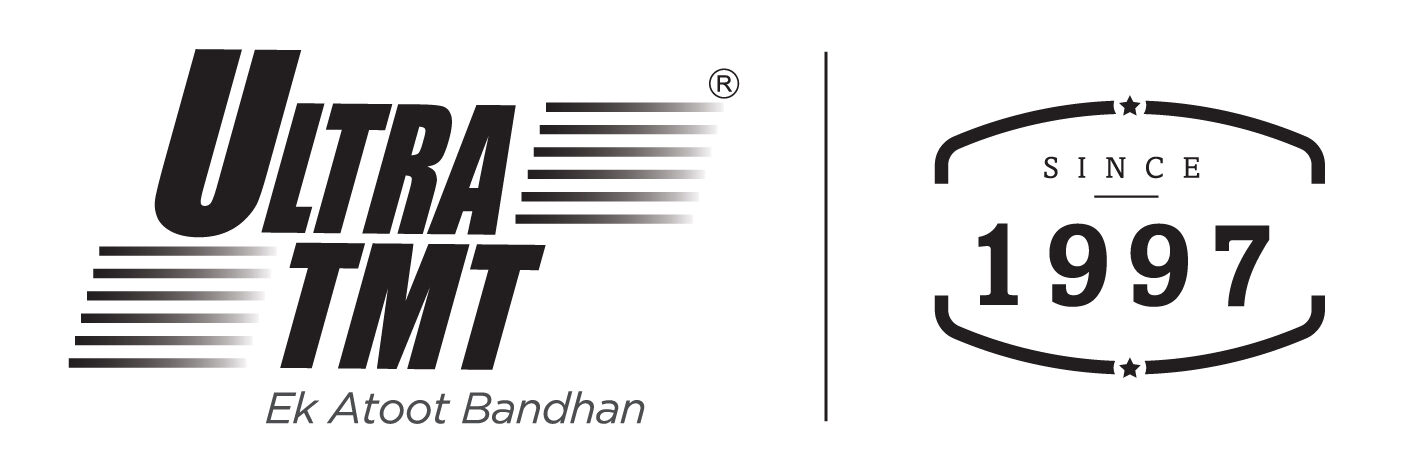

Ultra TMT Steel & The Pancha Bhootas: The Five Elements
The Pancha Bhootas are the five elements that make the fundamental building blocks of the universe, according to ancient Indian philosophy. Drawing inspiration from this ancient concept, Ultra TMT steel bars strive to achieve the balance between durability, strength and environmental responsibility. These elements are:
Prithvi (Earth): Earthquake resistance
Ultra TMT Steel is engineered to provide exceptional strength and durability, making it highly resistant to the forces of nature, including earthquakes. The structural integrity of buildings and infrastructure is critical in earthquake-prone regions.
Jal (Water): Corrosion and humidity
Water, in the form of moisture and humidity, can lead to corrosion and rust in construction materials. Ultra TMT Steel is designed to resist the corrosive effects of water, ensuring longevity and structural integrity.
Agni (Fire): Signifying fire resistance
Fire resistance is a critical property for construction materials, especially in scenarios where fires can break out due to accidents or unforeseen circumstances. Ultra TMT Steel exhibits impressive fire resistance, allowing it to maintain its structural integrity even when exposed to high temperatures.
Vayu (Air): Reflecting storm resistance
Extreme weather conditions, including storms, hurricanes, and strong winds, can exert immense pressure on buildings and infrastructure. Ultra TMT Steel is designed to withstand these forces, ensuring the structural stability of constructions even in the face of powerful winds and storms.
Akasha (Sky): Representing thunder and lightning
Thunderstorms and lightning can pose a threat to structures and their occupants. Ultra TMT Steel’s inherent resistance to the impact of lightning and thunder is a valuable feature for safety.
Conclusion:
Each of these elements plays a unique role in the creation and sustenance of life. Ultra TMT steel bars, with their robust characteristics, align closely with the Earth elements, embodying stability and strength.
When it comes to building, you need a foundation as strong as your dreams. Ultra TMT understands this, and they’re not just providing steel, they’re delivering strength, trust, and innovation.
FAQ
The difference between a TMT bar and a normal bar is the composition and strength. TMT (Thermo-Mechanically Treated) bars are manufactured by subjecting them to a combination of heat treatment and mechanical processes, which enhances their strength and ductility. This process involves quenching the bars in water after they are heated to a high temperature, followed by self-tempering. As a result, TMT bars exhibit superior tensile strength, elongation, and corrosion resistance compared to normal bars. Additionally, TMT bars have a soft ferrite-pearlite core and a tough outer martensitic layer, which contributes to their improved seismic resistance and structural integrity. In contrast, normal bars do not undergo such specialized treatment and have relatively lower strength and durability. Hence, in construction projects which require high quality reinforcement, TMT bars are widely preferred for their superior mechanical properties and ability to withstand seismic forces.
Several factors need to be considered while identifying the best TMT bars. Firstly, it is crucial to assess the brand reputation and credibility of the manufacturer. Look for renowned brands that have a proven track record of delivering high-quality TMT bars. Secondly, consider the grade and certification of the bars. Look for bars that comply with national and international standards, such as IS 1786:2008 for India or ASTM A615/A615M for the United States. Thirdly, evaluate the manufacturing process. The best TMT bars are produced using advanced technology and adhere to strict quality control measures, ensuring uniformity and consistency. Additionally, check for features like rib patterns, which enhance the bond strength with concrete. Lastly, consider factors such as corrosion resistance, elongation, and yield strength, as they determine the overall durability and performance of the TMT bars. By carefully considering these factors, you can identify the best TMT bars that meet your specific construction requirements.
TMT bars, or Thermo-Mechanically Treated bars, have a wide range of uses in the construction industry. They are primarily used for reinforcing concrete structures to provide strength and durability. TMT bars are commonly used in the construction of buildings, bridges, dams, flyovers, and other infrastructure projects. Due to their high tensile strength, they effectively withstand heavy loads and seismic forces, making them ideal for earthquake-prone areas. TMT bars are also corrosion-resistant, ensuring the longevity of structures even in harsh environmental conditions. Moreover, their superior bond strength with concrete enhances the structural integrity and stability of buildings. TMT bars are available in various sizes and grades, making them versatile for different types of construction applications. Overall, TMT bars are essential components in the construction industry, providing the necessary reinforcement to ensure safe and resilient structures.
